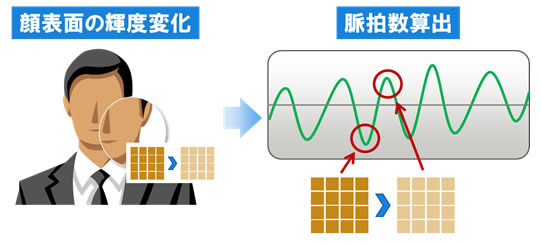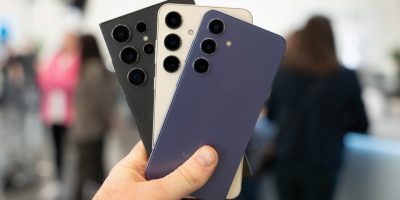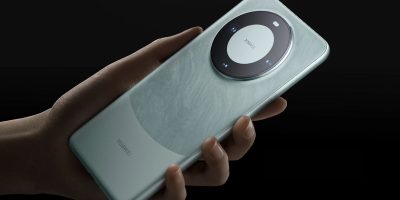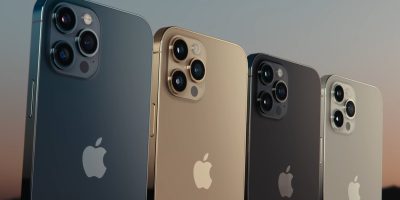
With smartphones plugged into nearly every aspect of our daily lives, the potential to use mobile devices as remote medical diagnostic tools has been growing. We have seen it with the introduction of Samsung’s S Health suite, but companies like Fujitsu are exploring even more intriguing possibilities. The Japanese company is showing off a new technology that uses a cellphone camera to measure a user’s pulse.
The whole process takes all of five seconds, and uses the phone’s camera sensor to detect the flow of hemoglobin in blood. This is accomplished by measuring the absorption of green light, something hemoglobin does quite well. The advancement is not only a breakthrough for remote diagnostics, but could also find a home in exam rooms and hospitals as a quick and unobtrusive way to gauge an individuals heart rate.
Fujitsu is currently demoing the tech at the General Conference of the Institute of Electronics, Information, and Communication Engineers in Gifu, Japan. Plans to bring the technology to consumer devices haven’t been fleshed out, but the company hopes it will reach consumers during the fiscal year 2013.
[via Engadget]
Fujitsu Laboratories Develops Real-Time Pulse Monitor Using Facial Imaging
Measures pulse in as little as five seconds using built-in cameras in PCs or smartphones, enabling ongoing health tracking
Kawasaki, Japan, March 18, 2013 – Fujitsu Laboratories Limited today announced that it has developed a technology to measure a person’s pulse in real time using a built-in camera or webcam in a PC, smartphone or tablet.
Fujitsu Laboratories has developed a technology that detects a person’s pulse by measuring variations in the brightness of the person’s face thought to be caused by the flow of blood. It is based on the characteristic of hemoglobin in blood, which absorbs green light. It requires no special hardware and can measure pulse rate simply by pointing a camera at a person’s face for as little as five seconds. It also automatically chooses moments when the person’s body and face are relatively still to minimize the effects of irrelevant data on measurements. This technology has a wide range of potential uses, including health monitoring and maintenance as well as security applications.
Details of this technology are being presented at the 2013 General Conference of the Institute of Electronics, Information, and Communication Engineers, opening March 19 in Gifu, Japan.
Background
In recent years, there has been increasing awareness about the need to maintain the health of employees and senior citizens, raising the demand for new, more convenient ways for individuals to monitor and manage their health, anytime and anywhere.
As part of a health-support service that can be customized to each person’s needs, Fujitsu Laboratories is aiming to create a way for people to track their health and store the resulting data in the cloud for analysis, helping them better understand their health and how it changes over time.
Fujitsu is committed to building the technological platforms needed to advance the Company’s vision of a Human Centric Intelligent Society, making it possible for people to use smartphones or tablets, or a computer at work or at home, to track their health, collect the resulting data, upload it to the cloud, and perform real-time analyses to provide individualized services for their personal needs.
Technological Issues
One fundamental indicator of human health condition is pulse. However, pulse monitoring typically requires specialized equipment that must be worn and operated with some care. These inconveniences make it more likely that users will fail or forget to have their pulse monitored. Accordingly, there has been a need for an automated way to measure pulse that minimizes the inconvenience of hooking up and operating the equipment as well as sitting still while it works.
Newly Developed Technology
Fujitsu Laboratories has developed a technology that automatically measures pulse in real time using facial images captured using the built-in camera on a smartphone, tablet, or PC. Key features of this technology are as follows.
1. Detects pulse by signal processing of extracted color components
One characteristic of hemoglobin in blood is that it absorbs green light. Based on this fact, Fujitsu Laboratories has developed a technology that detects a person’s pulse by measuring changes in the brightness of the person’s face as blood flows through it. The technology starts to work by shooting video of a subject and calculating average values for the color components (red/green/blue) in a certain area of the face for each frame. Next it removes irrelevant signal data that is present in all three color components and extracts the brightness waveform from the green component. The pulse rate is then computed based on the peaks in that brightness waveform. This technique can measure pulse in as little as five seconds.
2. Automatically removes moving segments
The acquired pulse data that is adversely affected by movements of the face or body is automatically removed. For example, moments when a person’s head turns sideways while talking on the phone or standing up from a chair are automatically detected and removed. This makes it possible to continually monitor pulse during the course of a day while minimizing the impact of irrelevant data.
Results
This technology relieves people from wearing or operating any specialized equipment or sitting still for long periods in order to have their pulse measured, and makes it possible to continually monitor pulse. For example, even at a busy workplace, or any time a person is sitting in front of a PC, whether for teleconferencing or writing e-mails, their pulse can be measured during brief moments of quiet. At home, a camera built into a TV can measure the pulse of people relaxing in front of it, or a mirror, for when people are getting ready in the morning. Pulse detectors built into gates at event sites or control points at airports could be a possible security application by detecting people in ill health and people acting suspiciously.
Future Plans
Fujitsu Laboratories seeks to put this technology into practical use in fiscal 2013 for a variety of application scenarios such as a security or health monitoring and maintenance solution, building it into smartphones, tablets, and PCs.










There are already apps on the play store that do this with your flash and camera…
yeah but you have to touch your camera lens with your finger
Gosh, things are moving soooo fast right now!!! I can’t even begin to imagine what First half & Second half of 2014 smartphones will feature.
Note to those who work in wireless stores: Consumers are going to have to very educated on all the features of these advanced & powerful snartphones,. . .so that they can fully utilize their new device!
MIT was working on something similar (maybe first?) http://news.cnet.com/8301-11386_3-57454459-76/mit-video-tech-could-be-a-remote-pulsometer-or-a-lie-detector/
Believe me, this is different. Fujitsu was/is an innovative company. Their devices are very high end. My first tablet was a Fujitsu. 2002 7 inch format, host Usb, memory card slots, waicom digital stylus etc etc etc. Sadly their equipment is hard to come by in the U.S. and their very best items never leave Japan. If they are working on pulse software etc it has nothing to do with the apps available at this time. This technology will probably end up also be sold to government to aid in lie and deception detection. Idk